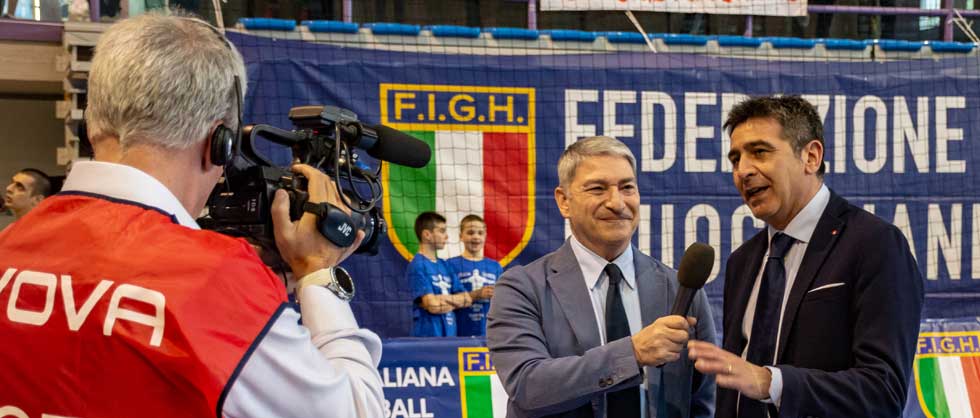![]()
- Cámaras PTZ 4K
Cámaras de producción IP PTZ 4K/50p robotizada
- Cámaras PTZ HD
Cámaras de producción IP PTZ HD robotizada
- Cámaras de mano 4K
Cámaras Profesionales de mano 4K
- Cámaras 4K compactas de mano
Cámaras Profesionales 4K de mano compactas.
- Cámaras de hombro
Cámaras de hombro para broadcast, noticias o eventos.
- Cámaras de Estudio
Videocámaras profesionales con 3CMOS de 2/3" o 1/3" para estudio.
- Sistemas de Estudio
Fibra óptica etc. Telecast/JVC/Fougerolle…
- Controles de Cámara
Topo tipo de controllador RMLP etc.
- Accesorios para Cámaras
Herramientas y Accesorios para Cámaras
- Monitores de Estudio 4K - Serie DTU
Monitores de estudio profesionales para Broadcast y producción 4K
- Monitores de Estudio HD - Serie DTV
Monitores de estudio profesionales para Broadcast y producción HD
- Monitores de Estudio HD compatible 4K
Monitores de estudio profesionales para Broadcast y producción HD compatible 4K
- Visores de Cámara
para Cámaras
- Accesorios para Monitores
Racks, Herramientas, Software, etc. para Monitores
- Producción en Directo
Herramientas y Hardware para Producción en Directo
- Descodificación y codificación Life Stream
Decodificadores y/o codificadores IP
- Accesorios y Herramientas para Producción IP
Herramientas para hardware y software de producción de IP
- Reference Series
Serie RS: High-End Home Cinema, Salas de Producción y de Grading
- Proyectores de Simulación
Serie VS / Serie SH - Imagen inmersiva, Simulación y Platenarios
- Accesorios de Proyección
Herramientas, pantallas, montajes, etc. para proyección
![]()
![]()
![]()
![]()
- Auriculares
-
- Novedades en Auriculares
- Auriculares True Wireless
- Nearphones
- Auriculares Deportivos
- Auriculares Cancelación de ruido
- Auriculares Cerrados (On Ear - Over Ear)
- Auriculares Bluetooth
- Auriculares botón con cable
- Auriculares Diadema Ligeros
- Auriculares Gaming e Infantiles
- Canceladores de ruido y Accesorios
- Proyectores
- Car Electronics
- JVC Profesional
-
- JVC e-SHop
-
- Soporte
-
- Cámaras PTZ
- Cámaras Profesionales
- Monitores Pro
- Sistemas Producción
- Proyección Profesional
![]()
![]()

 The camera can be used to all intents and purposes as a traditional camera, with HD-SDI and HDMI output, IP connectivity and onboard encoder and is physically connectable to a video mixer. It is therefore manageable when integrated with other similar or third-party products like a shooting system in a traditional video service with OB van or flight case; it can be remotely managed in remote production configuration; or it can be used as a complete single-camera streamer and simultaneous backup recording on MicroSD.
The camera can be used to all intents and purposes as a traditional camera, with HD-SDI and HDMI output, IP connectivity and onboard encoder and is physically connectable to a video mixer. It is therefore manageable when integrated with other similar or third-party products like a shooting system in a traditional video service with OB van or flight case; it can be remotely managed in remote production configuration; or it can be used as a complete single-camera streamer and simultaneous backup recording on MicroSD.